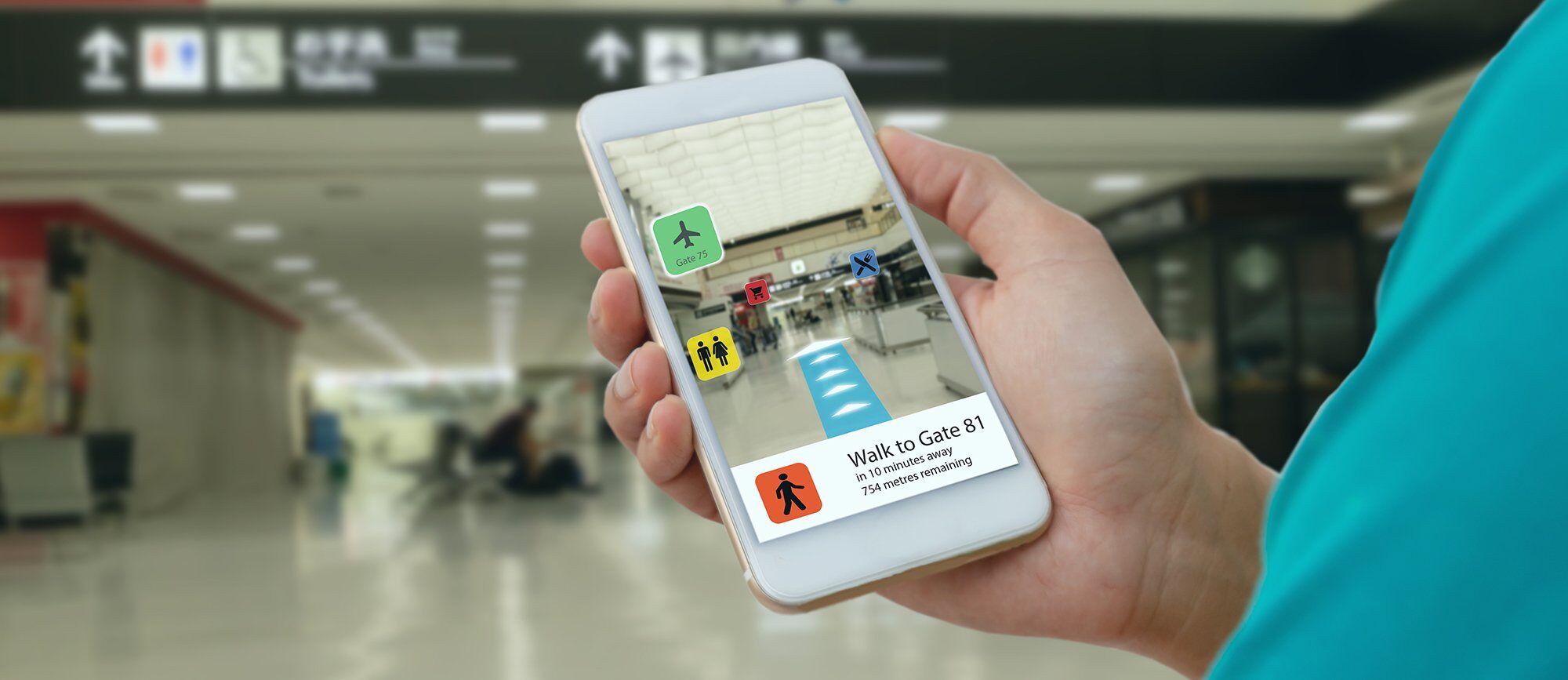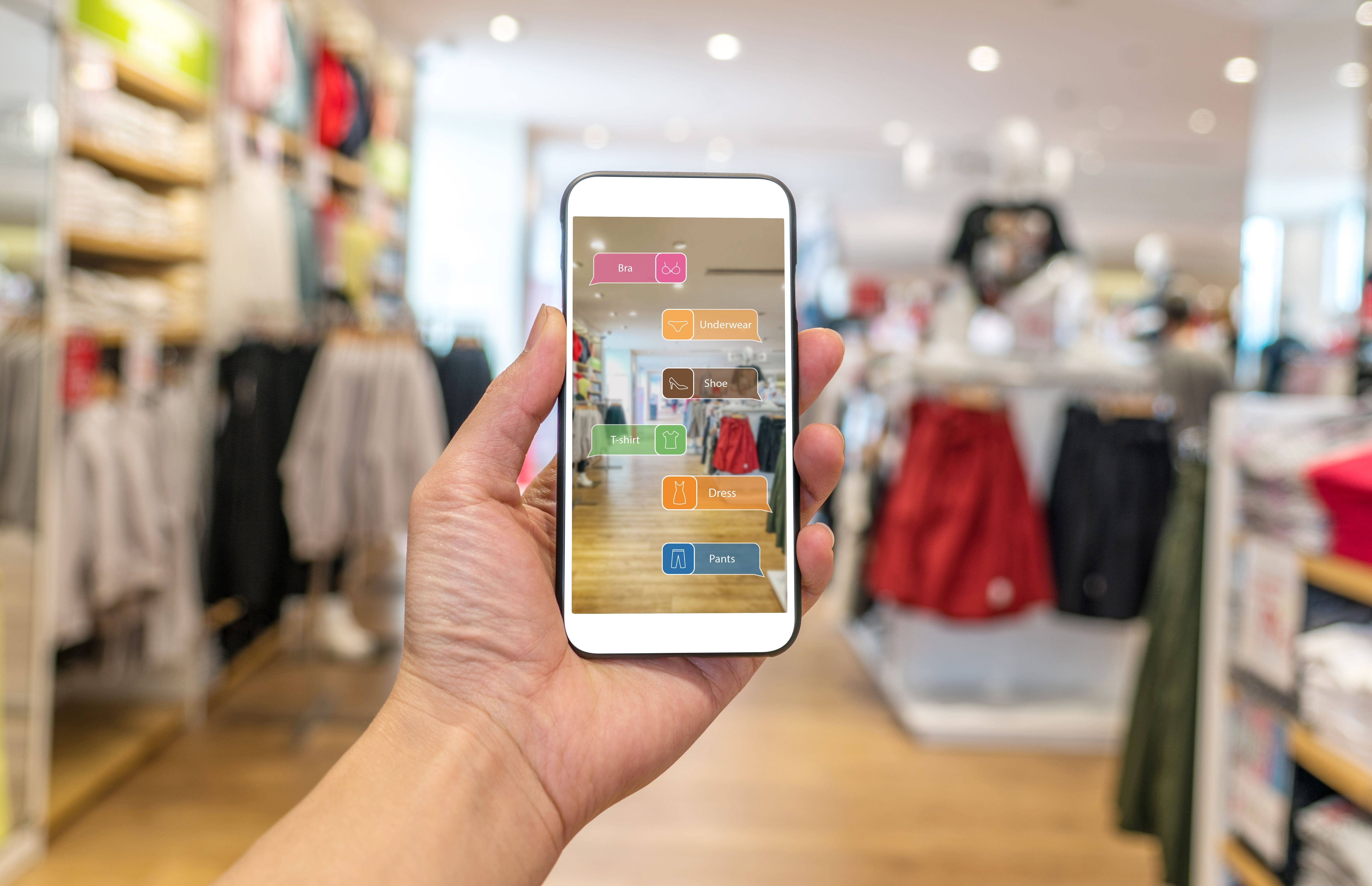![]()
Indoor positioning refers to the use of technology to identify and track a person's location within a building or other enclosed spaces such as airports, shopping malls, museums etc.
There are several uses of indoor positioning, including:
- Navigation : Indoor positioning can be used to provide turn-by-turn directions within a building, making it easier for people to find their way around large or unfamiliar spaces.
- Asset tracking : Indoor positioning can be used to track the location of equipment, inventory, and other assets within a facility, allowing organizations to improve efficiency and reduce the risk of loss or theft.
- Emergency response : Indoor positioning can be used to quickly locate people in emergency situations, such as a fire or active shooter event, improving response times and potentially saving lives.
- Marketing and advertising : Indoor positioning can be used to deliver targeted advertising and promotions to consumers based on their location within a store or other retail space.
- Facility management : Indoor positioning can be used to monitor foot traffic, identify areas of congestion, and make real-time adjustments to lighting, temperature, and other environmental factors to improve the overall experience of visitors.
- Safety and security : Indoor positioning can be used to monitor the movements of people and assets within a building and detect any suspicious activity. It can also be used to ensure compliance with safety regulations such as evacuation plans.
Why GPS cannot be used for indoor positioning.
GPS (Global Positioning System) is a satellite-based navigation system that is primarily designed for outdoor use. It uses signals from a network of satellites orbiting the Earth to determine the location of a device on the ground. However, GPS signals are not able to penetrate through solid objects such as buildings, so they are not reliable for indoor positioning.
There are a few reasons why GPS is not suitable for indoor positioning:
- Limited signal penetration : GPS signals are not able to penetrate through solid objects such as buildings, walls, and roofs, so they are not reliable for determining the location of a device inside a building.
- Reduced accuracy : Even when GPS signals do reach inside a building, the signals can be reflected or absorbed by walls and other surfaces, which can reduce the accuracy of the location information.
- Limited coverage : GPS coverage is not available in all indoor locations, such as underground parking garages or basements.
For these reasons, other technologies such as Wi-Fi, Bluetooth, ultrasonic, infrared etc are used for indoor positioning. These technologies can provide more accurate and reliable location information inside buildings by using signals that can penetrate through solid objects and other interference.
![]()
How indoor positioning can be implemented
There are multiple ways to achieve indoor positioning. Some of these ways are:
- Bluetooth-based positioning :
Bluetooth-based indoor positioning is a method of determining the location of a device or object inside a building or other enclosed space using Bluetooth technology. This typically involves using Bluetooth Low Energy (BLE) beacons, which are small, low-power devices that transmit a Bluetooth signal at regular intervals. The device or object that needs to be located, such as a smartphone or a robot, receives these signals and uses the received signal strength (RSS) and the known location of the beacons to determine its own location.
Bluetooth-based indoor positioning can be used in a variety of applications, such as personal navigation, tracking assets, and guiding robots or autonomous vehicles in indoor environments. The major advantage of this method is that it does not require additional hardware or sensors on the device, most of the smartphones and other devices are equipped with BLE capabilities. Additionally, it is also less expensive compared to other indoor positioning technologies. However, accuracy of this method is highly dependent on the density of the beacons and the environment, as signals can be obstructed by walls or other obstacles.

- Magnetic Field-based positioning :
Magnetic field-based indoor positioning is a method of determining the location of a device or object inside a building or other enclosed space using the Earth's magnetic field. This method typically involves using a magnetometer, which is a sensor that can detect the strength and direction of magnetic fields, on the device or object that needs to be located. The device can then use the information from the magnetometer and the known characteristics of the Earth's magnetic field to determine its location.
Magnetic field-based indoor positioning can be used in a variety of applications, such as personal navigation, tracking assets, and guiding robots or autonomous vehicles in indoor environments. One of the advantages of this method is that it does not require additional infrastructure, such as beacons or emitters, to be installed in the environment. Additionally, as Earth's magnetic field is relatively stable and can be precisely measured, this method can be more accurate compared to other methods such as Wi-Fi or Bluetooth-based positioning. However, accuracy is dependent on the ability to model the magnetic field and remove interference from other sources, like electrical devices.
- Wi-Fi scanning-based positioning :
Wi-Fi scanning-based indoor positioning is a method of determining the location of a device or object inside a building or other enclosed space using Wi-Fi technology. This typically involves using Wi-Fi access points (APs) that transmit Wi-Fi signals, and a device such as a smartphone or a sensor that can scan for and receive these signals. The device can then use the received signal strength (RSS) and the known location of the APs to determine its own location.
Wi-Fi scanning-based indoor positioning can be used in a variety of applications, such as personal navigation, tracking assets, and guiding robots or autonomous vehicles in indoor environments. The major advantage of this method is that it does not require additional hardware or sensors on the device, most of the smartphones and other devices are equipped with Wi-Fi capabilities. Additionally, Wi-Fi signals can penetrate walls and other obstacles, making it suitable for multi-level buildings or basements. However, accuracy of this method is highly dependent on the density of the APs and the environment, as signals can be obstructed by walls or other obstacles. Additionally, it can be affected by other sources of interference such as other wireless devices that share the same frequency.
- RFID-based positioning :
RFID (radio-frequency identification)-based indoor positioning is a method of determining the location of a device or object inside a building or other enclosed space using RFID technology. This method typically involves using RFID tags, which are small, low-power devices that can be attached to an object, and RFID readers, which can detect and communicate with the RFID tags. The location of the object can then be determined based on the position of the RFID reader and the known location of the RFID tag.
RFID-based indoor positioning can be used in a variety of applications, such as tracking assets, personal navigation, and guiding robots or autonomous vehicles in indoor environments. One of the advantages of this method is that it does not require the device to be actively transmitting or receiving signals, making it suitable for low-power or battery-powered devices. Additionally, it can provide accurate location information even when the device is not in the line of sight of the reader. However, RFID-based indoor positioning has a limited range, typically a few meters, and it can be affected by interference from other sources such as metal objects or other RF devices.
- Infra-red based positioning :
Infrared (IR) based indoor positioning is a method of determining the location of a device or object inside a building or other enclosed space using infrared technology. This method typically involves using infrared emitters, such as LED lights, to transmit IR signals, and infrared sensors on the device to receive and analyze the signals. The position of the device can then be determined based on the strength and timing of the received signals, and the known location of the emitters.
Infrared-based indoor positioning can be more accurate than other methods, such as Wi-Fi or Bluetooth-based positioning, as IR signals can be precisely aimed and directed, and they are less likely to be affected by interference from other sources. This method is particularly useful for applications such as tracking assets, personal navigation, and guiding robots or autonomous vehicles in indoor environments.
- Ultrasound-based positioning :
Ultrasound-based indoor positioning is a method of determining the location of a device or object inside a building or other enclosed space using ultrasound technology. This method typically involves using ultrasonic emitters, which are devices that transmit high-frequency sound waves, and an ultrasonic sensor on the device or object that needs to be located. The device can then use the time of flight (TOF) of the sound waves and the known location of the emitters to determine its own location.
Ultrasound-based indoor positioning can be used in a variety of applications, such as personal navigation, tracking assets, and guiding robots or autonomous vehicles in indoor environments. One of the advantages of this method is that it does not require line of sight between the emitters and the device, making it suitable for environments with obstacles or walls. Additionally, it can work well in environments with a lot of noise or other sources of interference. However, accuracy of this method is highly dependent on the environment, as sound waves can be obstructed by walls or other obstacles, or reflected by surfaces, making it difficult to precisely locate the device.
- Optical-based positioning :
Optical-based indoor positioning is a method of determining the location of a device or object inside a building or other enclosed space using optical technology. This can be achieved by using visual landmarks such as QR code, barcode or by using cameras to capture images or video frames of the environment and then analyzing the images to estimate the device's location.
This method uses computer vision techniques to detect, and track known features in the environment, such as natural features like corners, edges or texture and artificial features like QR codes or barcodes, and then use that information to estimate the device's position. Optical-based indoor positioning can also utilize simultaneous localization and mapping (SLAM) techniques to create a map of the environment and estimate the device's position within it.
Optical-based indoor positioning can be used in a variety of applications, such as personal navigation, tracking assets, and guiding robots or autonomous vehicles in indoor environments. One of the advantages of this method is that it does not require additional infrastructure, such as beacons or emitters, to be installed in the environment. Additionally, it can provide high accuracy in well-lit environments, but it can be affected by changes in lighting conditions, or by the presence of obstacles that block the view of the camera.

- Vision-based positioning :
Vision-based positioning is a method of determining the position and orientation of a device or object using visual information obtained from cameras or other imaging sensors. This can be done by analyzing images or video frames to detect and track known landmarks, or by using techniques such as simultaneous localization and mapping (SLAM) to create a map of the environment and estimate the device's position within it. Vision-based positioning can be used in a variety of applications, including robotics, autonomous vehicles, and augmented reality.
- Machine learning-based positioning :
Machine learning-based indoor positioning is a method of determining the location of a device or object inside a building or other enclosed space using machine learning algorithms. This is typically done by analyzing data from various sensors such as Wi-Fi, Bluetooth, and ultrasonic, to identify the location of a device. The sensor data is used to train a machine learning model, which can then be used to estimate the device's location based on new sensor readings. This method is particularly useful for indoor environments where GPS signals are not available, and it is widely used for applications such as navigation for visually impaired, tracking assets, and personal navigation.
- Hybrid positioning :
Hybrid-based indoor positioning is a method of determining the location of a device or object inside a building or other enclosed space using a combination of different technologies. This method uses information from multiple sources, such as Wi-Fi, Bluetooth, ultrasound, infrared, and others to determine the device's location. The device or object that needs to be located, such as a smartphone or a robot, receives signals from multiple sensors and uses the combination of these signals to estimate its location.
Hybrid-based indoor positioning can provide more accurate and robust location information than a single technology by combining the advantages of different technologies and reducing the limitations of individual ones. It can also adapt to different environments and conditions by switching between technologies depending on the availability and quality of signals.
Hybrid-based indoor positioning can be used in a variety of applications, such as personal navigation, tracking assets, and guiding robots or autonomous vehicles in indoor environments. However, it requires a more complex system for data fusion and decision making, which could make it more challenging to implement and maintain, and it can also be affected by the quality of the signals from each individual technology.
Conclusion
Indoor positioning systems are a vital tool for businesses and individuals that need to track their location in an indoor environment.
It’s important to note that the selection of the technology to use for indoor positioning should be based on the specific requirements of the application, the environment, and the available infrastructure.
About Coforge
Coforge is a global digital services and solutions provider, that enables its clients to transform at the intersect of domain expertise and emerging technologies to achieve real-world business impact.
We can help refine your problem statement, crystallize the benefits, and provide concrete solutions to your problems in a collaborative model.
About Coforge Xtreme Navigator
Coforge Xtreme Navigator utilizes technology-agnostic architecture to provide flexibility in building indoor positioning solutions. It uses various Indoor Positioning technologies to provide advanced and accurate real-time indoor location and positioning services. The solution can also be integrated with your existing platforms to reduce operational costs, increase efficiency, and improve customer experience.
We would love to hear your thoughts and use cases. Please reach out to Coforge CTO Office to begin a discussion.

Deepak Saini is AVP, Digital Services, Coforge Technologies. He has 23 years of IT experience with strong technology leadership experience in Machine Learning, Deep Learning, Generative AI, NLP, Speech, Conversational AI, Contact Center AI, Responsible AI.

Khushboo Goyal is working as Technical Architect. She has around 14 years of IT experience in the domain of Banking & Finance, Intellectual property rights and insurance. She has strong technology experience in the fields of AWS and Conversational AI. She has also worked on Rest API based Java/Spring applications.
Related reads.
About Coforge.
We are a global digital services and solutions provider, who leverage emerging technologies and deep domain expertise to deliver real-world business impact for our clients. A focus on very select industries, a detailed understanding of the underlying processes of those industries, and partnerships with leading platforms provide us with a distinct perspective. We lead with our product engineering approach and leverage Cloud, Data, Integration, and Automation technologies to transform client businesses into intelligent, high-growth enterprises. Our proprietary platforms power critical business processes across our core verticals. We are located in 23 countries with 30 delivery centers across nine countries.



